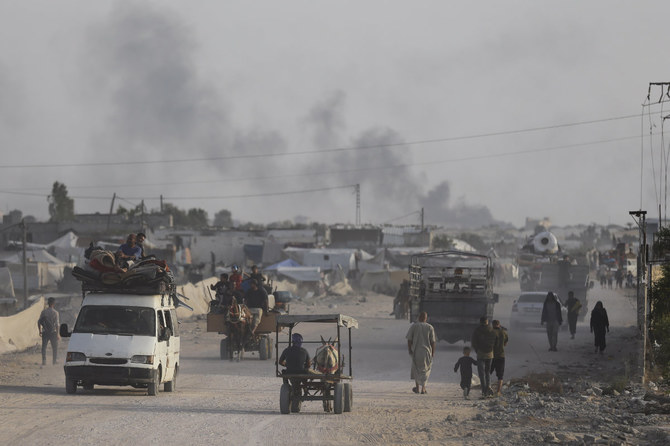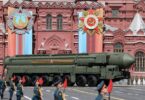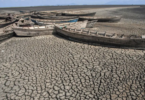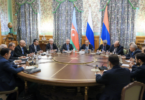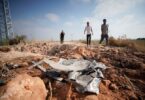Dr. Abdel Aziz Aluwaisheg
An Israeli attack in southern Gaza last week ignited a fire in a camp for the displaced at Tel Al-Sultan in western Rafah that killed at least 45 Palestinians, many burned alive, and injured hundreds more, adding to at least 36,000 killed and more than 100,000 injured since the start of the conflict.
Many of the victims had fled to Rafah on the orders of Israeli forces who were bombarding other parts of Gaza. When Israel invaded Rafah three weeks ago and ordered the evacuation of its eastern districts, many refugees were forced to flee west, to destinations including Tel Al-Sultan. A week before the bombing, Israel had designated the neighborhood a “safe zone” and dropped leaflets urging Palestinians to move there. The attack hit a tent encampment known as the Kuwait Peace Camp, the location of which had to be known to Israel. Thus the responsibility for this war crime falls squarely on Israel.
The attack came in defiance of the International Court of Justice, which just two days earlier had ordered Israel to halt the Rafah offensive: Israel disregarded the order, confirming its rogue-state status. Despite the horror of last week’s attack, the US has yet to call for a stop to Israel’s Rafah operation. Earlier, President Joe Biden had said he would limit weapons supplies to Israel if it entered Rafah’s “population centers,” which clearly it has. But the US has taken no action, and has instead continued to support Israel materially and diplomatically. The administration’s spokesmen have failed to call out Israel for crossing Biden’s red line, and its UN diplomats are thwarting efforts for the UN Security Council to order a halt to Israel’s Rafah operations.
This attack was the second mass killing Israel has committed in Rafah in this war. Its forces launched an assault on the city in February, killing over 83 people. Airstrikes destroyed several homes, killing most or all of their occupants, another textbook war crime.
To many Palestinian refugees in Gaza, most of whom are descendants of refugees in earlier waves going back to 1948, these massacres bring to mind the 1956 massacre by Israeli forces in a Rafah refugee camp, and repeated in other parts of Gaza, during Israel’s brief occupation of the Strip. Hundreds of refugees were killed in cold blood. Those killings stopped only when Israel was forced to withdraw in early 1957, following a threat of action by US President Dwight Eisenhower.
Only when faced with such decisive moves by the US has Israel in the past curbed its appetite for Palestinian blood and land. So far in this war, the US has chosen not to do so, but has emboldened Israel by continuing military support, including weapons used in the Gaza war, and shielding it from Security Council censure.
The US administration has also failed to persuade Israel to provide humanitarian aid to the Palestinians in Gaza, as required of an occupying power under international humanitarian law; to stop obstructing aid from other counties; and to open more crossings for the delivery of aid to Gaza. The US attempt to help by building a temporary pier off the coast of Gaza has fallen apart, as did the pier — which took months to build at great cost to US taxpayers, but was never able to provide the assistance it had promised. The whole effort was undertaken because the US did not want to pressure Israel to allow sufficient aid through the closed land crossings, including the Rafah border crossing, which already existed and would have been more than sufficient to allow sufficient aid in. The result has been an increasing number of Palestinians dying of starvation and malnutrition.
In addition to the colossal humanitarian toll of its Rafah incursions, Israel has now taken over the Rafah crossing between Egypt and Gaza. This has had severe implications. For one, Israel has effectively cut off the main humanitarian access to Gaza and prevented the delivery of acutely needed aid. For another, Israel is trying to force its own vision for the future of Gaza, precluding the possibility of restoring control of the Strip by the Palestinian Authority, which the US and others have proposed, and reunifying Gaza with the West Bank as a prelude for an independent and viable Palestinian state.
Richard Peeperkorn, World Health Organization representative in the Occupied Palestinian Territories, said in February: “All eyes are on Rafah,” warning against Israeli forces attacking the city. He feared “unimaginable disaster” if the Israeli army made a large-scale incursion into the city, which at the time it was threatening to invade.
Since last week’s attack there has been widespread international condemnation. Officials and activists have been repeating Peeperkorn’s phrase to express their concern and opposition to Israel’s military operation in Rafah. His words superimposed on an image of tent camps for displaced Palestinians have been widely shared on social media, about 50 million times on Instagram alone.
The image is moving, despite its simplicity and the absence of pictures of dead bodies, blood, real people, names or distressing scenes. Its widespread use indicates how abhorrent most of the world, including most Americans, view the carnage in Rafah and all of Gaza. All eyes are on Rafah, but also on Washington: Israel’s genocidal war in Gaza has continued mainly because the US has failed to take action to stop it. If Benjamin Netanyahu is left to his base instincts, he will drag his people, the entire region and possibly the US to the abyss with him. As the 19th-century British philosopher John Stuart Mill observed: “Bad men need nothing more to compass their ends, than that good men should look on and do nothing.” The “good men” of the US government have so far chosen to do nothing.

